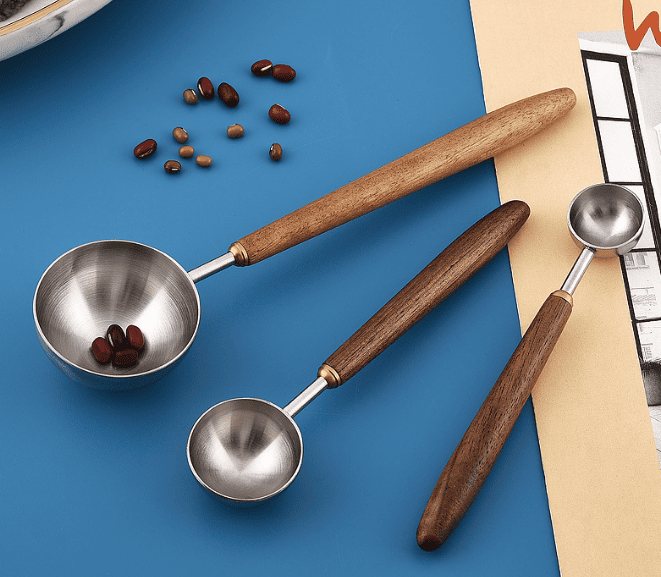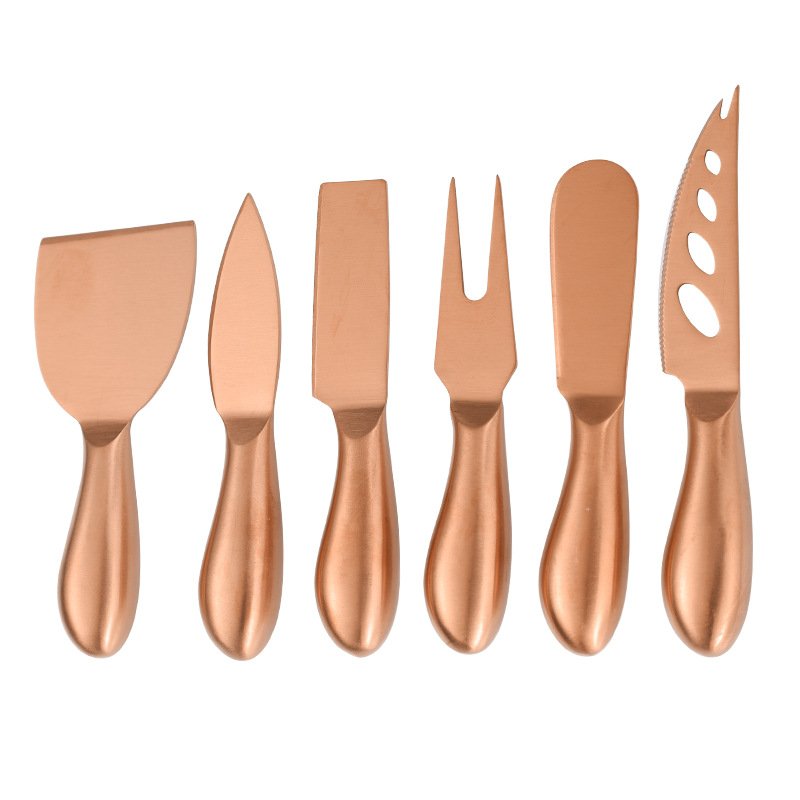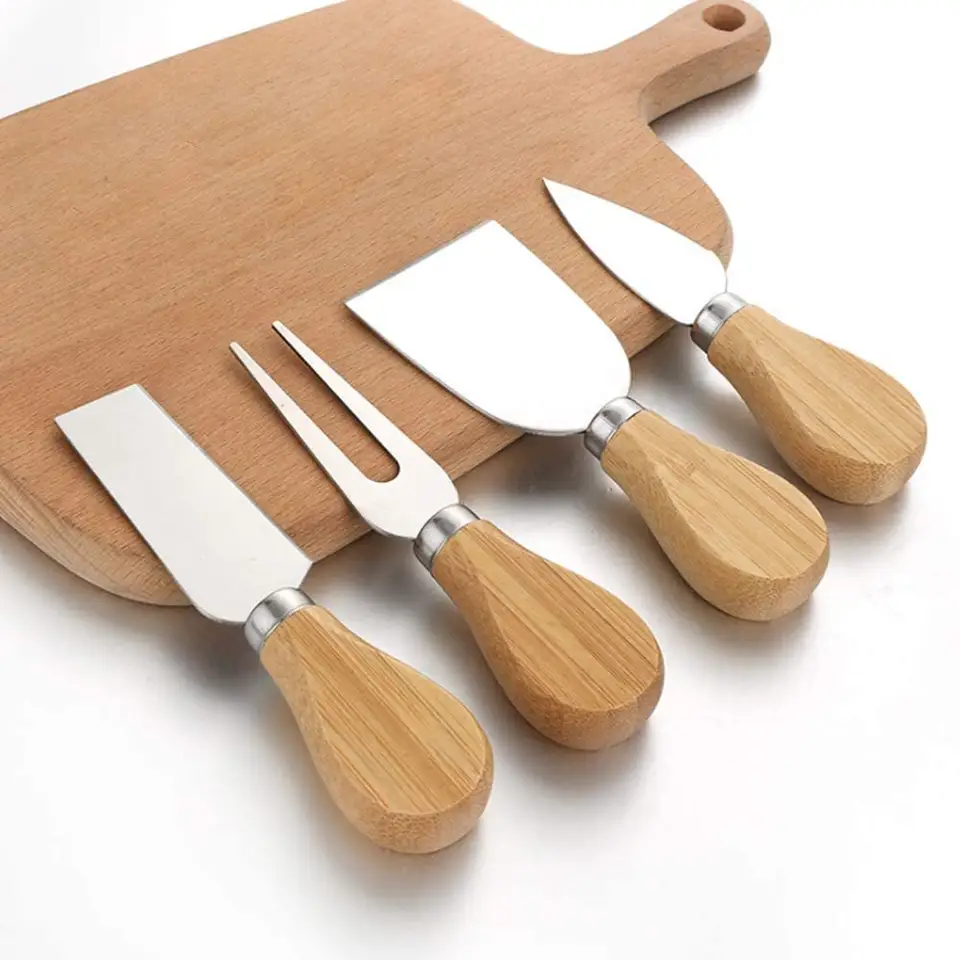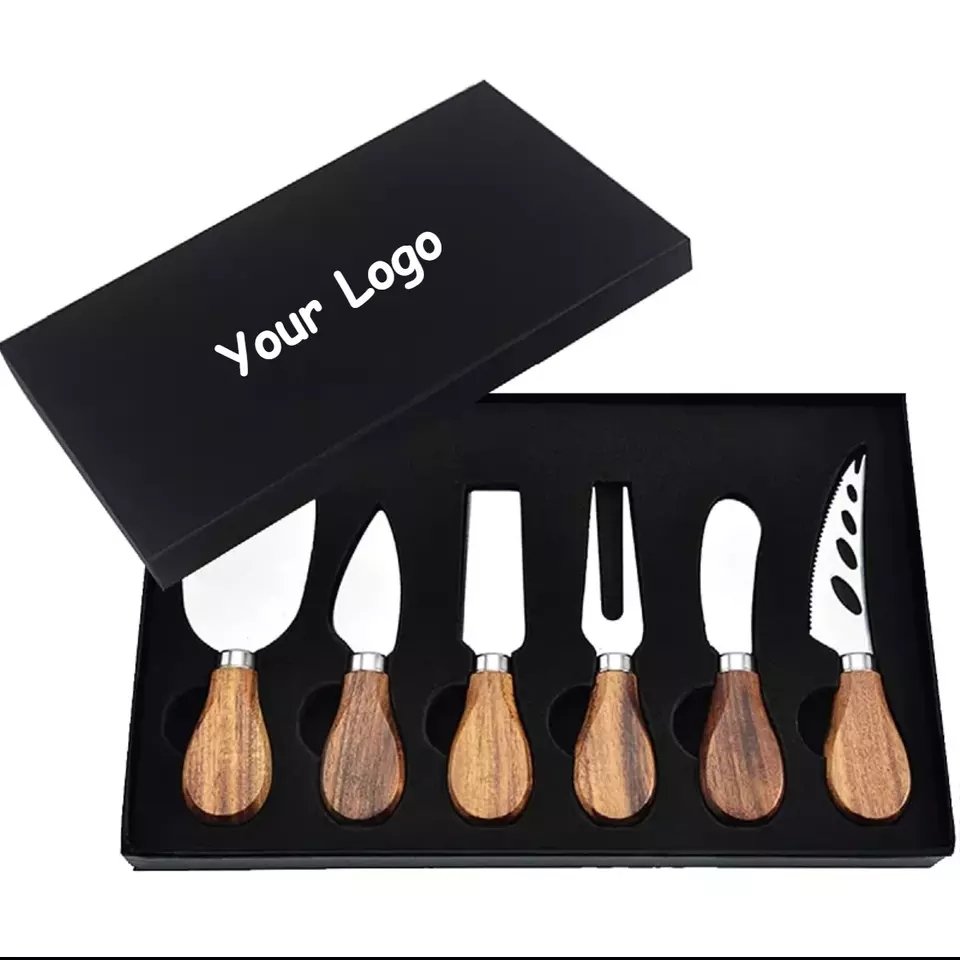Measuring wrong can ruin a whole recipe—especially when the spoons you use are the problem. Choosing the right material matters more than you think.
The best material for measuring spoons depends on accuracy, durability, and food safety. Stainless steel is often the top choice, but other materials also have pros and cons.
Choosing between stainless steel, plastic, silicone, or other materials is not just about looks. Each type brings different results to your kitchen. Let’s break it down together so you can make the best choice for your brand, your product, or your daily cooking.
Table of Contents
What materials are commonly used to make measuring spoons?
Poor-quality measuring spoons wear out fast or give inaccurate results. That can lead to cooking disasters or unhappy customers.
Common materials include stainless steel, plastic, silicone, and occasionally wood or aluminum. Each offers a different balance of price, durability, and safety.
Let’s go through each material with an honest lens. I’ve handled and produced nearly all of them in my factory over the years.

1. Stainless Steel
Strong, durable, resistant to rust, and widely used in both home and professional kitchens.
– Pros: High durability, doesn’t bend easily, dishwasher safe
– Cons: Higher cost, heavier, can scratch delicate surfaces
2. Plastic
Lightweight, cheap, and colorful.
– Pros: Budget-friendly, easy to mold into different shapes
– Cons: Wears out fast, can warp in high heat, not always BPA-free
3. Silicone
Flexible, heat-resistant, and modern-looking.
– Pros: Non-stick surface, quiet when dropped, heat resistant
– Cons: Can stain over time, less precise in shape, may tear if thin
4. Wood
Rare but sometimes used in rustic designs.
– Pros: Unique appearance, sustainable feel
– Cons: Hard to clean, not very precise, not dishwasher safe
5. Aluminum
Lightweight, but often avoided for food use unless coated.
Pros: Cheap, easy to shape
Cons: Reactive with acidic foods, prone to corrosion
| Material | Durability | Food Safety | Price | Weight | Cleaning |
|---|---|---|---|---|---|
| Stainless Steel | Excellent | Excellent | High | Heavy | Easy |
| Plastic | Fair | Varies | Low | Light | Easy |
| Silicone | Good | Good | Medium | Light | Easy |
| Wood | Poor | Fair | Medium | Medium | Hard |
| Aluminum | Fair | Poor | Low | Light | Medium |
When I work with clients designing cutlery or utensils, I always suggest they start with the end user in mind. Who will use it? Home cooks? Chefs? Beginners? That answer often points to the best material choice.
Is stainless steel better than plastic for kitchen measuring tools?
Broken plastic spoons. Bent handles. Scratched surfaces. These are things I hear from customers switching from plastic to stainless steel.
Yes, stainless steel is generally better than plastic for measuring spoons in terms of durability, accuracy, and safety. But it also depends on the use case and market.
Comparing Stainless Steel and Plastic Side by Side
Let’s take a closer look. I’ve helped many brands move from plastic to stainless over the years, especially as customers demand better quality and longer lifespan.
Accuracy and Longevity
Stainless steel spoons hold their shape and size over time.
Plastic spoons can warp or degrade, changing their capacity slightly over time.
Appearance and Feel
– Stainless steel feels heavier, more premium.
– Plastic is lighter and feels less serious—good for kids or casual users.
Safety and Health
– Stainless steel is non-reactive and generally safe.
– Plastic can contain BPA or other chemicals. Even BPA-free plastics may release compounds under heat.
Market Perception
– Stainless steel gives a premium, long-lasting image.
– Plastic is often seen as disposable or temporary.
| Feature | Stainless Steel | Plastic |
|---|---|---|
| Durability | Very High | Low |
| Weight | Heavier | Lighter |
| Food Safety | Excellent | Depends on type |
| Heat Resistance | Excellent | Poor to Fair |
| Cost | Higher | Lower |
| Sustainability | Recyclable | Often not |
From a production side, stainless steel molds are costlier, but worth it if you’re building a trusted brand. I usually ask clients: do you want this product to be reused for years or replaced in a few months?
What is food-grade stainless steel and why does it matter?
Some stainless steel is safe. Some is not. And customers can’t always tell the difference until it’s too late.
Food-grade stainless steel resists rust, corrosion, and chemical leaching. Grades like 304 and 316 are widely used in kitchenware and meet global safety standards.
Digging Deeper into Food-Grade Steel
There are many types of stainless steel. Not all are suitable for food use.
Common Food-Grade Types
| Grade | Composition | Features | Uses |
|---|---|---|---|
| 304 | 18% Chromium / 8% Nickel | Corrosion-resistant, durable | Cutlery, utensils |
| 316 | 16% Chromium / 10% Nickel / 2% Molybdenum | Superior corrosion resistance (especially to salt) | Medical tools, premium cookware |
| 430 | 18% Chromium / 0% Nickel | Magnetic, lower corrosion resistance | Cheaper kitchenware, appliances |

Why It Matters
Food-grade steel doesn’t leach harmful materials. It holds up under acidic ingredients, dishwasher cycles, and years of use.
Real World Example
A customer once switched from unknown-grade stainless to certified 304 for a measuring spoon line. Returns and customer complaints dropped by over 70% in 6 months.
For Brilliant, I always insist we use certified 304 or 316 steel for food contact. I share test reports transparently with clients because I want them to trust what they’re buying.
Are silicone-coated measuring spoons safe and durable?
They’re soft, colorful, and popular. But are they truly practical?
Silicone-coated spoons are generally safe and durable if made from FDA- or LFGB-approved silicone. But they are less precise and may wear faster than metal.
Evaluating Silicone for Measuring Spoons
Silicone is flexible and quiet—great for avoiding scratches or noise in metal bowls. But it’s not all perfect.
Safety Considerations
– Must be food-grade, free of fillers.
– Should be tested under **FDA or LFGB** standards.
– Cheap silicone can release odors or discolor.
Durability
– Resists heat up to 220°C or more.
– Coating can peel over time if not properly bonded.
– Edges may not be sharp, affecting precision.
| Feature | Silicone-Coated Spoons |
|---|---|
| Heat Resistance | High |
| Precision | Medium |
| Cleaning | Easy |
| Longevity | Moderate |
| Eco Impact | Mixed (depends on core) |
My Advice
I only recommend silicone for special cases—like kids’ baking kits or brands targeting a fun, soft-touch look. If your market demands precision or long-term use, go stainless.
How does material choice affect cost and production time?
Fast doesn’t always mean cheap. Cheap doesn’t always mean profitable.
Material choice can greatly change tooling cost, production time, and unit price. Stainless steel costs more but lasts longer. Plastic molds are cheaper and faster.
Behind the Scenes in the Factory
When I help clients choose materials, I often show them the full impact—not just unit price.
Tooling Cost
| Material | Mold Cost (USD) | Production Speed | Maintenance |
|---|---|---|---|
| Stainless | $5,000–$10,000 | Medium | Low |
| Plastic | $1,000–$3,000 | High | Medium |
| Silicone | $3,000–$6,000 | Medium | High |
| Wood | Handcrafted | Slow | Very High |

Production Time
Plastic spoons can be made in seconds with injection molding. Stainless steel requires stamping, polishing, and welding.
Long-Term Cost
If your customer keeps replacing spoons every few months, plastic looks cheaper. But in B2B or branded kitchenware, stainless pays off in the long run.
Which material is easiest to clean and maintain?
Sticky sugar. Greasy butter. Strong curry. Cleaning spoons should be easy.
Stainless steel is the easiest material to clean and sanitize. Plastic and silicone may hold onto stains or odors over time.
Cleaning in Real Life
Here’s what I’ve seen after years of washing, testing, and reusing spoons in both home and lab settings.
Cleaning Time & Effort
| Material | Dishwasher Safe | Odor Retention | Stain Risk | Scrub Effort |
|---|---|---|---|---|
| Stainless Steel | Yes | No | Low | Low |
| Plastic | Sometimes | Yes | Medium | Medium |
| Silicone | Yes | Yes | High | Low |
| Wood | No | High | High | High |
Plastic and silicone often absorb color from turmeric or tomato. Stainless steel comes out looking brand new every time.
Long-Term Maintenance
Only stainless stays clean-looking after years. That’s why many restaurants only use metal tools.
How to identify if a material meets international food safety standards?
Not every product labeled “food-safe” really is. Certifications matter—and they protect both you and your customers.
Check for certifications like FDA, LFGB, DGCCRF, or BSCI. Ask for test reports and traceable material sources. Real suppliers are happy to provide them.
My Insight as a Supplier
This is where most buyers slip up. They choose based on sample looks, but never ask for real documentation.
Key Certifications
| Standard | Region | Scope |
|---|---|---|
| FDA | USA | Chemical migration, safety of contact |
| LFGB | Germany/EU | Stricter than FDA, includes sensory tests |
| DGCCRF | France | Compliance with EU food law |
| BSCI | Global | Social responsibility (factory audit) |

What I Do for Clients
At Brilliant, we proactively test materials. I send clients reports before they even ask. Why? Because I’ve seen what happens when people skip this step. A European client once had a shipment seized due to non-compliant plastic—even though their local agent had “checked everything.”
How You Can Be Sure
– Ask for 3rd-party test reports
– Look for permanent marking on metal (e.g., “304”)
– Confirm factory certification validity (ask for BSCI or ISO files)
I’m always happy to walk clients through this because it builds trust—and saves them from risk.
The right measuring spoon material depends on how it’s used, who will use it, and what values your brand wants to promote.





